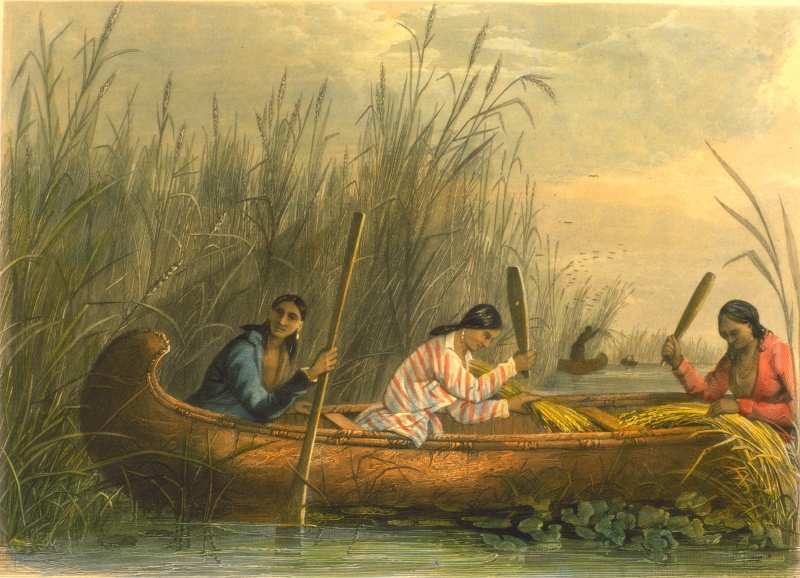Mnomen [Wild Rice]
Traditionally, the transition from niben [summer] to dgwaget [fall] was known as Nibnegises [Ripening Moon], the time of year when Potawatomi and other Neshnabek migrated to their annual menomen [wild rice] camps for harvest. A primary food staple, wild rice was extensively traded among Algonquin tribes and foreign merchants. Aside from diet, it was used medicinally and spiritually in various ceremonies.
Harvest extended several weeks and was conducted in teams of two, each equipped with a gajwéb’egen [push pole] and a set of bwe’gen or “knockers”. Used to propel the weté-mnomen [ricing boat], the cedar or tamarack gajwéb’egen [push pole] measured up to fourteen feet in length. The forked design helped to achieve optimal thrust, while protecting the plants’ delicate root system. Knockers, crafted from cedar and measuring three feet in length, were used to gently pull and thresh the menomen [wild rice] grains into the hull of the weté-mnomen.
Processing began by air drying the grains, each inspected for imperfections and foreign materials. Yields too large to dry at once were preserved in moist soil pits dug near shorelines. In addition to completing the drying process, wild rice was parched to eliminate bacteria and loosen the grain’s hull for removal. Once complete, the grains’ color changed from golden brown to glossy black. Wearing knee-high mkeznen [shoes], hullers filled a botagen [pit lined with deer hides] with roasted menomen [wild rice] and ground or “danced” the hulls off with their feet. The final processing stage prior to storage was nboshkana [winnowing]. Using a boshkangen [winnowing tray/sifter], hulled grains were tossed and caught, allowing the wind to clear away the chaff.
Ricing not only contributed to our subsistence and trade, but promoted communal interaction, strengthening social and cultural bonds. Today, our menomen [wild rice] customs are preserved and sustained by our Potawatomi and Neshnabek kinsmen in the Great Lakes Region.

